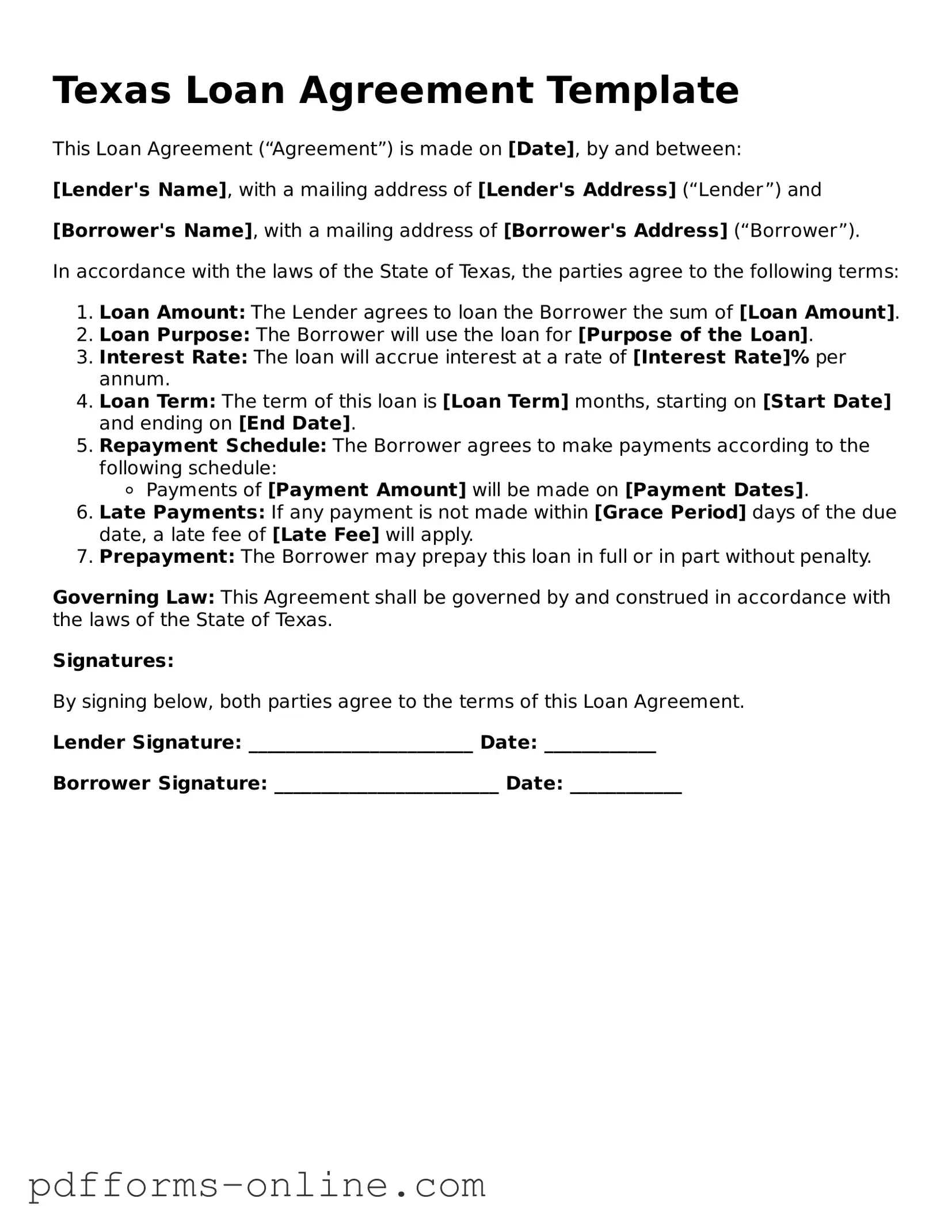Texas Loan Agreement Template
This Loan Agreement (“Agreement”) is made on [Date], by and between:
[Lender's Name], with a mailing address of [Lender's Address] (“Lender”) and
[Borrower's Name], with a mailing address of [Borrower's Address] (“Borrower”).
In accordance with the laws of the State of Texas, the parties agree to the following terms:
- Loan Amount: The Lender agrees to loan the Borrower the sum of [Loan Amount].
- Loan Purpose: The Borrower will use the loan for [Purpose of the Loan].
- Interest Rate: The loan will accrue interest at a rate of [Interest Rate]% per annum.
- Loan Term: The term of this loan is [Loan Term] months, starting on [Start Date] and ending on [End Date].
- Repayment Schedule: The Borrower agrees to make payments according to the following schedule:
- Payments of [Payment Amount] will be made on [Payment Dates].
- Late Payments: If any payment is not made within [Grace Period] days of the due date, a late fee of [Late Fee] will apply.
- Prepayment: The Borrower may prepay this loan in full or in part without penalty.
Governing Law: This Agreement shall be governed by and construed in accordance with the laws of the State of Texas.
Signatures:
By signing below, both parties agree to the terms of this Loan Agreement.
Lender Signature: ________________________ Date: ____________
Borrower Signature: ________________________ Date: ____________
